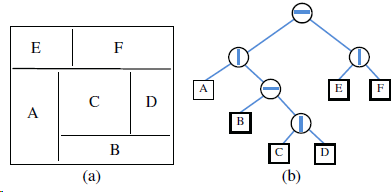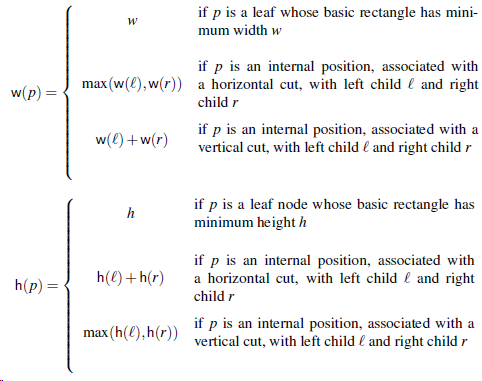A slicing floor plan divides a rectangle with horizontal and vertical sides using horizontal and vertical cuts.
Question:
A slicing floor plan divides a rectangle with horizontal and vertical sides using horizontal and vertical cuts. (See Figure 8.23a.) A slicing floor plan can be represented by a proper binary tree, called a slicing tree, whose internal nodes represent the cuts, and whose external nodes represent the basic rectangles into which the floor plan is decomposed by the cuts. (See Figure 8.23b.) The compaction problem for a slicing floor plan is defined as follows. Assume that each basic rectangle of a slicing floor plan is assigned a minimum width w and a minimum height h. The compaction problem is to find the smallest possible height?

and width for each rectangle of the slicing floor plan that is compatible with the minimum dimensions of the basic rectangles. Namely, this problem requires the assignment of values h(p) and w(p) to each position p of the slicing tree such that:

Design a data structure for slicing floor plans that supports the operations:? Create a floor plan consisting of a single basic rectangle.? Decompose a basic rectangle by means of a horizontal cut.? Decompose a basic rectangle by means of a vertical cut.? Assign minimum height and width to a basic rectangle.? Draw the slicing tree associated with the floor plan.? Compact and draw the floor plan.
Step by Step Answer:

Data Structures and Algorithms in Java
ISBN: 978-1118771334
6th edition
Authors: Michael T. Goodrich, Roberto Tamassia, Michael H. Goldwasser





